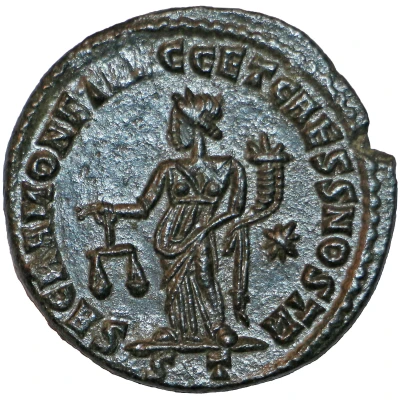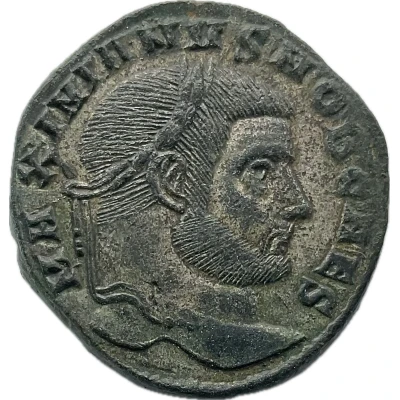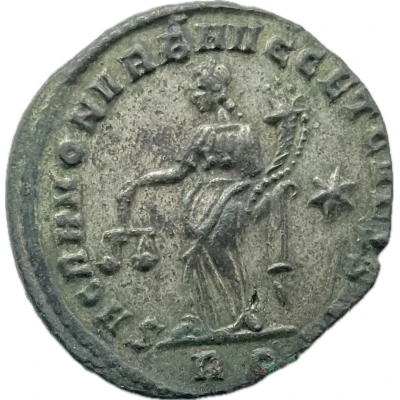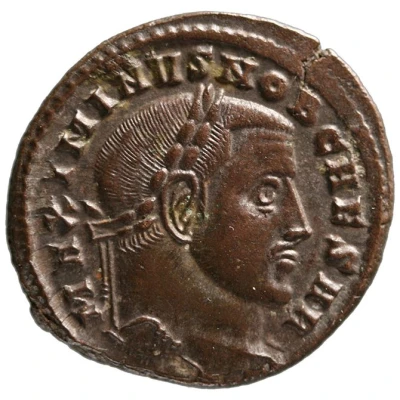
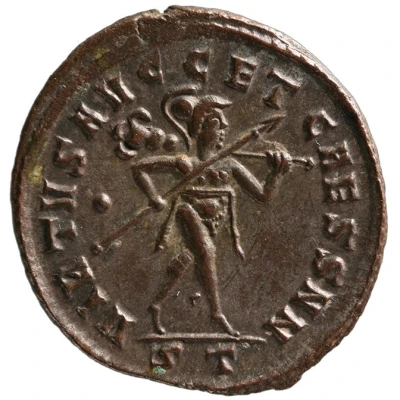

© Kunst Historisches Museum Wien (CC BY-NC-SA 3.0)
Nummus - Maximinus II as Caesar VIRTVS AVGG ET CAESS NN; Ticinium
305 year| Bronze | 8.5 g | 27 mm |
| Issuer | Rome › Roman Empire (27 BC - 395 AD) |
|---|---|
| Caesar | Constantius I Chlorus (Flavius Valerius Constantius) (293-305) |
| Type | Standard circulation coin |
| Year | 305 |
| Value | Nummus / Follis (¼) |
| Currency | Argenteus, Reform of Diocletian (AD 293/301 – 310/324) |
| Composition | Bronze |
| Weight | 8.5 g |
| Diameter | 27 mm |
| Shape | Round (irregular) |
| Technique | Hammered |
| Orientation | Variable alignment ↺ |
| Demonetized | Yes |
| Updated | 2024-10-05 |
| Numista | N#375014 |
|---|---|
| Rarity index | 97% |
Reverse
Mars, helmeted, advancing right, holding transverse spear in right hand and trophy over left shoulder.
Dot in left field.
Officina and mintmark in exergue.
Script: Latin
Lettering:
VIRTVS AVGG ET CAESS NN or
VIRTVS AV-GG ET CAESS NN
Unabridged legend: Virtus Augustorum et Caesarum Nostrorum
Translation: The virtue of our Emperors and Caesars
Interesting fact
One interesting fact about the Nummus - Maximinus II as Caesar coin is that it features the image of a Roman Emperor who ruled during a time of great turmoil and political upheaval in the Roman Empire. Maximinus II, also known as Maximinus Thrax, was a military leader who rose to power through the ranks and became Emperor in 305 AD. His reign was marked by several military campaigns and conflicts, including a civil war against the rival emperor, Constantine I. Despite his military prowess, Maximinus II's rule was short-lived, as he was killed in 306 AD during a rebellion led by his own soldiers. The coin bearing his image is a rare and valuable artifact that provides a glimpse into the tumultuous history of the Roman Empire during this period.

